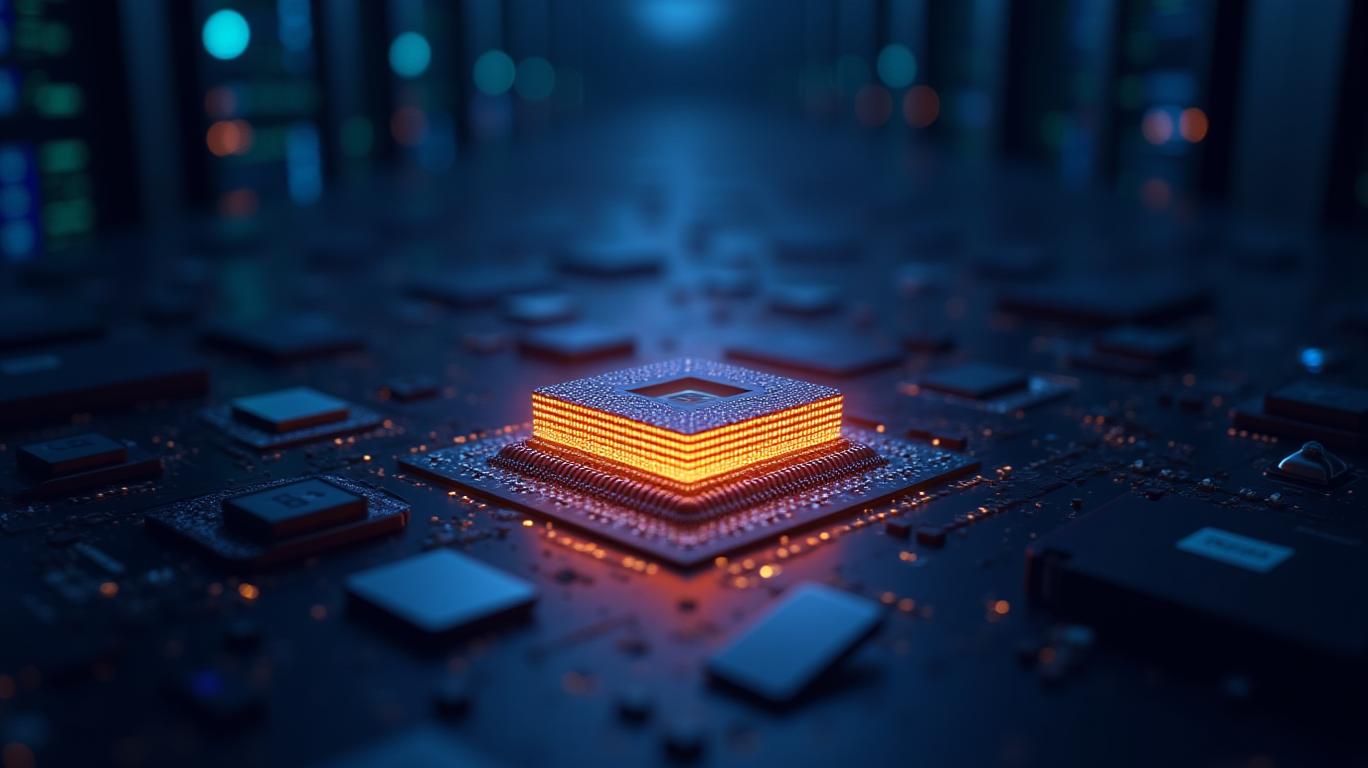Kioxia's Dominant Position in AI-Driven Data Infrastructure: A Buy Signal for 2025
The AI revolution is rewriting the rules of data infrastructure. As hyperscalers and enterprises race to build AI-driven ecosystems, the demand for high-performance storage—particularly datacenter SSDs—has exploded. Among the key beneficiaries is Kioxia Holdings Corporation (ticker: 6682.T), a leader in NAND flash and enterprise SSDs. With a 10% global market share in datacenter SSDs (2023), record fiscal 2024 revenue of $11.3 billion, and breakthroughs in BiCS Gen9 NAND, Kioxia is primed to capitalize on secular tailwinds. Yet its stock trades at a discount, offering a rare entry point ahead of a Q4 2025 recovery driven by inventory corrections and PCIe Gen5 adoption. This is a buy signal for 2025.

The Case for Secular Growth in Enterprise SSDs
The datacenter SSD market is in hyperdrive. By 2028, global datacenter storage capacity is projected to double to 2.49 zettabytes (Gartner), with SSDs displacing HDDs as the preferred medium for AI workloads. Kioxia’s FY2024 results reflect this shift: its SSD and Storage segment revenue nearly doubled year-over-year, driven by AI servers and traditional datacenter upgrades. While competitors like Samsung and Western Digital (WDC) dominate broader markets, Kioxia’s niche focus on enterprise PCIe SSDs—which now account for 50% of its SSD segment revenue—positions it uniquely.
Despite its 10% market share in 2023, Kioxia is accelerating its growth. Its BiCS Gen9 NAND (300+ layers) delivers 35% higher density than prior generations, enabling SSDs with unmatched performance and energy efficiency. This technology is critical for PCIe Gen5 adoption, which Kioxia is prioritizing through products like its CD15 Series—already certified for VMware vSAN and NVMe 2.0 standards. As PCIe Gen5 becomes the backbone of next-gen datacenters, Kioxia’s lead in this space will amplify its market share.
Technical Leadership: NAND Innovation as a Moat
Kioxia’s crown jewel is its NAND roadmap, which outpaces rivals in both speed and scalability. Its BiCS Gen8 flash is already in volume production, while Gen9—scheduled for late 2024—will solidify its edge. Competitors like Intel and Micron face supply constraints or slower innovation cycles, while Samsung’s dominance is tempered by its reliance on contract manufacturing.
Meanwhile, Kioxia’s partnership with Western Digital (WDC) remains intact, despite WDC’s spin-off of its SanDisk business. Their joint venture in NAND fabrication ensures steady supply, while WDC’s own 12% YoY growth in SSD revenue (Q3 2024) signals demand resilience. This stability removes a key overhang for Kioxia’s valuation.
Valuation: A Discounted Stock Ahead of Recovery
Kioxia’s stock has languished amid industry-wide inventory overhangs, with NAND bit growth forecasted at just low 10% for 2025. However, this is a temporary drag. Analysts expect a Q4 2025 recovery as hyperscalers and enterprises ramp up AI infrastructure spending. Key catalysts include:
- PCIe Gen5 adoption: Expected to hit 30% penetration in datacenters by mid-2025.
- Capex cuts by peers: Reduced NAND production by competitors like Micron and SK Hynix will tighten supply.
- AI-driven demand: IDC projects $108.3 billion in shared cloud infrastructure spending in 2025, up 43% YoY.
Today, Kioxia trades at just 7.2x 2025E earnings, well below its 5-year average of 12.5x. The market is pricing in near-term pain but ignoring the $11.3 billion revenue base and $1.17 billion cash reserves that will cushion it until recovery.
Why Act Now?
The H2 2025 demand surge is a binary event for Kioxia. Once PCIe Gen5 becomes standard and inventory imbalances correct, its 10% market share could jump to 15%+, leveraging its technology and partnerships. The Q4 2024 revenue guidance of ¥330 billion (up 2.5% YoY) already hints at stabilization, while its Q3 IFRS profit of ¥76.1 billion reversed prior-year losses.
Investors should act now to secure a position before the following catalysts crystallize:
1. BiCS Gen9 launch: Late 2024, with volume shipments in 2025.
2. WDC partnership stability: No operational impact from SanDisk’s spin-off.
3. AI capex acceleration: Hyperscalers like Amazon and Google are ramping datacenter spending ahead of 2025.
Conclusion: A Buy at Current Levels
Kioxia is the best leveraged play on the AI-driven data infrastructure boom. With a 10% market share in datacenter SSDs, a $11.3 billion revenue milestone, and a 300-layer NAND moat, it is positioned to outperform as supply-demand dynamics normalize. Valued at a discount and with a clear 2025 recovery path, this is a compelling buy.
Investment Thesis: Buy Kioxia now for a 20–30% upside by end-2025. The AI storage revolution is here—don’t miss the train.

Comments
No comments yet